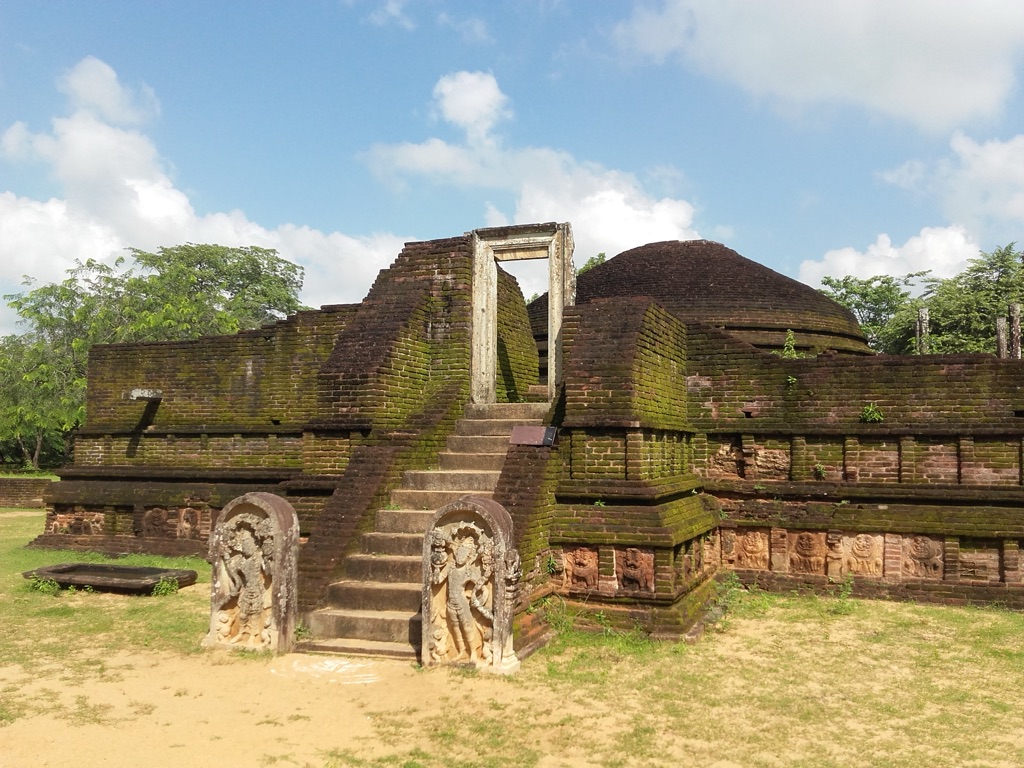The Ancient City of Polonnaruwa stands as a testament to Sri Lanka’s rich history. Once the thriving capital of the Polonnaruwa Kingdom, it now lies in majestic ruin. This UNESCO World Heritage site showcases the advanced urban planning, impressive architecture, and intricate artistry of a bygone era. Polonnaruwa succeeded Anuradhapura as the capital in the late 10th century and flourished during the reign of the great King Parakramabahu I. Its well-preserved ruins include palaces, temples, and stupas, offering a glimpse into the past glory of Sri Lankan civilization.
Get your dose of History via Email
Historical Background of Ancient City of Polonnaruwa
The discovery of Polonnaruwa dates back to the 19th century when antiquarians and colonial officials took interest in Sri Lanka’s past. H.C.P. Bell, the British archaeologist, played a pivotal role in its excavation and documentation. The city’s origins trace back to the Chola dynasty from South India, who established it as a capital after conquering Anuradhapura. However, it was under King Parakramabahu I that Polonnaruwa reached its zenith in the 12th century. The city later fell into decline and was eventually abandoned after the invasion of the Magha from Kalinga.
Polonnaruwa was a fortified city, with its royal palace complex at the heart. The city’s strategic location made it a hub for trade and agriculture. It was also a center of Buddhist learning and art. The city’s impressive irrigation systems, like the Parakrama Samudra, are a testament to the advanced engineering skills of the time. These systems supported a thriving agricultural economy and sustained the city’s population.
After its abandonment, Polonnaruwa was reclaimed by the jungle, hiding its splendor for centuries. The city’s rediscovery brought to light its historical significance. It became a key site for understanding Sri Lankan history. The city’s ruins have since been preserved and studied, revealing insights into the lives of its inhabitants.
Polonnaruwa has witnessed significant historical events, including royal successions, invasions, and the spread of religion. The city’s architecture reflects the influence of both Hinduism and Buddhism, which coexisted during its time as a capital. The Gal Vihara, a rock temple with large Buddha statues, is a highlight of the city’s religious significance.
The city’s abandonment led to a natural preservation of its structures, protected by the dense forest. Today, Polonnaruwa is a major archaeological site and a destination for tourists and scholars alike. Its ruins serve as a reminder of the transient nature of empires and the enduring legacy of their cultural achievements.
About Ancient City of Polonnaruwa
Polonnaruwa’s urban fabric was meticulously planned. The city was divided into specific areas for religious, administrative, and residential purposes. The royal palace complex, known as the Vejayanta Pasada, once stood seven stories high, showcasing the grandeur of the kingdom. The Audience Hall with its intricately carved elephants and the bathing pools, such as the Lotus Pond, reflect the sophistication of the city’s design.
The construction techniques of Polonnaruwa were advanced for their time. Builders used bricks and stones, with fine carvings on wood and stone adorning the structures. The Quadrangle, a compact group of ruins, contains some of the most exquisite examples of Polonnaruwa’s architecture, including the Vatadage, which is believed to have housed the Sacred Tooth Relic of the Buddha.
The Gal Vihara stands out for its monumental Buddha statues carved out of a single granite rock face. These sculptures represent a peak in Sinhalese rock carving. The Thuparama, the oldest image house in the city, still bears murals that have survived the tropical climate. These artistic achievements highlight the city’s cultural zenith.
The city’s infrastructure, particularly its vast irrigation systems, was crucial to its sustainability. The Sea of Parakrama, an artificial tank, was a marvel of hydraulic engineering. It provided water for both consumption and irrigation, enabling the city to flourish in the dry zone of Sri Lanka.
Polonnaruwa’s architectural highlights are numerous, from the Shiva Devale, a Hindu shrine that shows the Indian influence, to the Lankatilaka, a massive image house with towering walls. Each structure within the city tells a story of a civilization that valued art, religion, and technological prowess.
Theories and Interpretations
Several theories exist about Polonnaruwa’s purpose and the significance of its structures. Some scholars suggest that the city’s layout reflects the cosmological ideas of the time, with the royal palace representing the center of the universe. Others interpret the extensive religious architecture as evidence of the kingdom’s commitment to Buddhism and Hinduism.
The mysteries of Polonnaruwa include the exact functions of certain buildings. For instance, the purpose of the curious circular relic house known as the Vatadage remains a topic of debate. While it likely held a sacred relic, its precise religious significance is still studied.
Historians have matched the city’s ruins to historical records in the Mahavamsa, an ancient chronicle of Sri Lankan history. These records have helped date the structures and understand the city’s evolution. Carbon dating and stratigraphy have also been used to confirm the chronology of Polonnaruwa’s development.
Theories about the city’s decline are varied. Some attribute it to invasions, while others point to ecological factors like malaria. The shift of the capital to more defensible locations also played a role in its abandonment.
Polonnaruwa’s art and architecture have been interpreted as a fusion of South Asian influences. This blend is seen in the Hindu temples and Buddhist stupas that dot the landscape. The city’s ruins continue to be a source of fascination, offering insights into the cultural exchanges that occurred in medieval Sri Lanka.
At a glance
- Country: Sri Lanka
- Civilization: Sinhalese, Chola dynasty
- Age: Approximately 1070 AD to 1310 AD
Conclusion and Sources
- Wikipedia – https://en.wikipedia.org/wiki/Polonnaruwa
- Britannica – https://www.britannica.com/place/Polonnaruwa
- UNESCO – https://whc.unesco.org/en/list/201
- Archaeological Survey of Sri Lanka – Official Website

